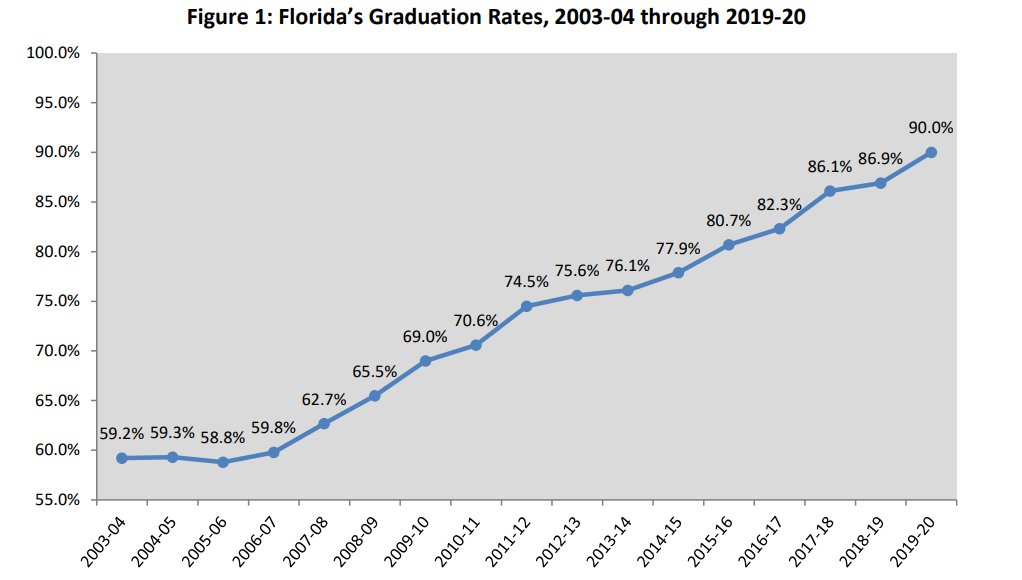 Last week, the Florida Department of Education released updated data on Florida’s high school graduation rate, including increases across all racial demographics. This new data represents Florida’s highest graduation rate ever (90%) and shows steady growth since a low point in 2005-06, when only 58.8% of Florida’s high schoolers graduated.
Last week, the Florida Department of Education released updated data on Florida’s high school graduation rate, including increases across all racial demographics. This new data represents Florida’s highest graduation rate ever (90%) and shows steady growth since a low point in 2005-06, when only 58.8% of Florida’s high schoolers graduated.
These new numbers arrive amidst the disarray caused by COVID-19 in the spring of 2020. Even though schools went virtual and students’ lives were disrupted, the state waived testing and certain requirements for graduation. Ultimately, 2019-20 saw an improvement of 3.1 percentage points compared to 2018-19.
All racial demographics saw improvement in their graduation rates. In particular, American Indian or Alaska Native students saw the greatest jump, by 6.6 percentage points compared to the previous year. Also notable: Black students saw a jump of 5.1 percentage points compared to the previous year, and since 2015-16 have seen a jump of 14.3 percentage points. Latino students also saw a gain of 3.6 percentage points from the previous year and have seen a total gain of 10 percentage points since 2015-16. While all groups saw an increase in high school graduation rates, it is important to note a gap still exists between several demographic groups – the Black/White gap is 5.1 percentage points, the American Indian or Alaska Native/White gap is 7.6 percentage points, and the Latino/White gap is 2.2 percentage points.
Most school districts saw gains in their graduation rates compared to the previous year. Several districts in Florida stand out for their great jumps: Jefferson County increased 23 percentage points, Gadsden County increased 17 percentage points, Hamilton County increased 14 percentage points, and Hardee County increased 10 percentage points. Florida’s largest district, Miami-Dade, saw a jump of 4 percentage points, bringing the nation’s fourth-largest district to 89.6%.
The report clarifies that a 90% graduation rate does not mean the other 10% dropped out. Rather, the 10% of nongraduates consists of both dropouts and nongraduates. The nongraduates represent 6.9% of those who did not graduate this year, and they are mostly still in school, with some also attending adult education, withdrawing to a private school, or receiving certificates of completion or GED-based diplomas. The remaining 3.1% have dropped out.
The strong graduation numbers are a positive sign that through the disarray of the pandemic, students are still following through on their educational journeys. Although national data released in December 2020 shows fewer graduates went to college immediately after high school in the fall of 2020, all may not be lost for Florida’s postsecondary attainment goals. To ensure Florida is talent strong, all Floridians must have access to education or training beyond high school. This includes the 188,000+ new graduates from the class of 2020, and the thousands more we’ll see in 2021.
RELATED ARTICLES:
New National Student Clearinghouse data paint a concerning picture for 2021 college enrollment


